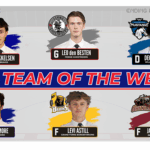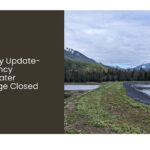Home »

Provincial budget priorities misguided: SD5
On March 9, School District No. 5 (SD5), Southeast Kootenay Board of Education sent a letter to Premier Christy Clark, Finance Minister Michael De Jong and Education Minister Mike Bernier expressing disappointment with the BC Budget 2016 – 2017.
 “While we acknowledge public education will receive a so-called increase of approximately one per cent in each of the next two years, our board is extremely disappointed that government continues to choose not to adequately invest in K – 12 Education to ensure future prosperity for the province through a well-educated work force,” stated Board Chair Frank Lento.
“While we acknowledge public education will receive a so-called increase of approximately one per cent in each of the next two years, our board is extremely disappointed that government continues to choose not to adequately invest in K – 12 Education to ensure future prosperity for the province through a well-educated work force,” stated Board Chair Frank Lento.
Lento said a one per cent increase does nothing to address “inflationary costs” such as “Hydro and MSP increases,” unfunded “wage increases,” surprise “claw- backs” like year two of the “administrative savings” demanded by government in 2015, or the “infrastructure costs” required to accommodate the new provincial reporting program, MyEducationBC.
According to Lento, school boards must also address the disappearance of this year’s “holdback fund” – money the Ministry of Education traditionally “holds back” after the initial per student and grant funding has been distributed to Boards of Education. This money is then distributed to districts late in the budget year and is used by districts to accommodate mid-year increases in student numbers, special education needs etc. These funds are commonly built into a board’s yearly budget.
This year’s holdback funds, says Lento, will instead be used to fund the influx of nearly 7,000 new students attending public schools in the 2016 – 2017 school year – students government failed to anticipate in their initial Education Budget. While the province has promised to fully fund these students, rather than adjust the Ministry of Education’s (MoE) Budget to accommodate the increased demand placed on public education, districts are instead forced to forfeit their holdback funding.
Based on the current student projections it is estimated that – in addition to reallocating the districts’ holdback funds – the Ministry of Finance (MoF) will need to allocate an extra $30 million to the MoE in order for government to meet its commitment to fully fund these students.
Lento said that if this additional funding is provided, it should not be considered an “increase” to education funding and that the decision not to fund the mounting increased costs to public education is particularly frustrating given the 2016 Report on the Budget Consultations has once again indicated that K-12 education is a public spending priority and that government should recognize and fund the increased costs that school districts have incurred.
Lento said the board cannot understand why, despite B.C. already having a AAA credit rating and one of the lowest debts among provinces, government has chosen to pay down debt faster than scheduled in last year’s budget, essentially removing $500 million from the Provincial Budget that could have been used to better support public education and other essential services British Columbians pay taxes to support.
“Debt payment is a misguided priority over essential services. As long as it’s manageable—which B.C.’s debt is—debt isn’t necessarily a bad thing. It’s what enables families to own homes and governments to pay for education, infrastructure and other things we all rely on; things that improve our quality of life now and ensure our kids have a healthy, well-educated and prosperous future,” Lento said.
SD5







